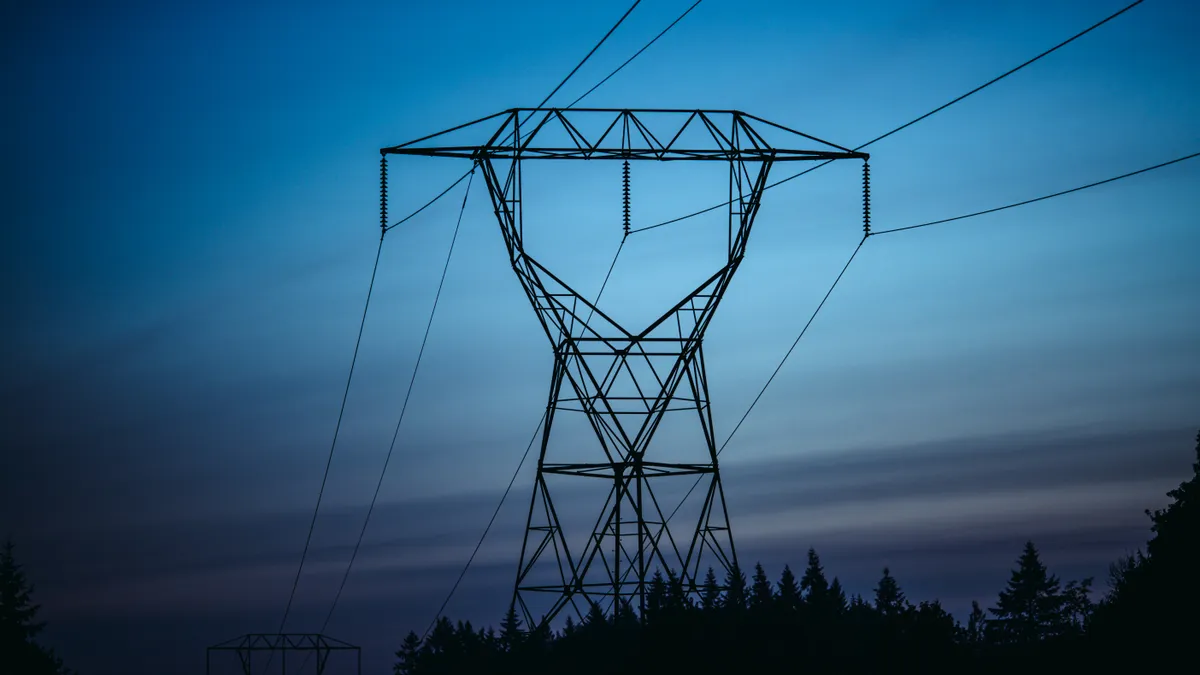Dive Brief:
-
The United States could use advanced grid technologies on existing transmission and distribution systems to support up to 100 GW of incremental peak demand when each technology is installed individually — and even more when installed in combinations, the Department of Energy said Tuesday.
-
Deploying technologies like dynamic line ratings, known as DLR, and virtual power plants could help defer $5 billion to $35 billion in transmission and distribution infrastructure costs over the next five years, according to DOE’s Pathways to Commercial Liftoff: Advanced Grid Deployment report.
-
Typically, advanced grid technologies can be deployed at less than a quarter of the cost of transmission lines and significantly more quickly — in less than three years compared to roughly a decade for some transmission projects, Maria Robinson, director of DOE’s Grid Deployment Office, said during a media briefing.
Dive Insight:
The Advanced Grid Deployment report is the latest in a series of DOE reports that aims to show how various energy technologies can reach commercial liftoff, led by the private sector with support from the government.
The report assessed 20 advanced grid solutions — including advanced conductors, advanced distribution management systems, topology optimization and communications technologies.
“The solutions that we talk about in this report are ready to go today and can serve as a bridge to address near-term concerns, including all of our needs around transmission and distribution, and while we continue to build those out longer term along with our generation capacity,” Robinson said.
DOE said DLR technology, for example, can be scaled in less than three months after initial implementation to increase effective transmission capacity on an existing line by 10% to 30% on average at less than 5% of the cost of rebuilding a line to expand capacity.
While advanced grid technologies can boost capacity, improve reliability and reduce costs, their widespread use is lagging, according to DOE.
“Traditional cost-of-service [investor-owned utility] business models have not sufficiently incentivized these solutions to warrant the significant upfront planning, engineering, operational, and organizational effort required to deploy advanced technologies at scale,” DOE said.
Commercial liftoff for advanced grid solutions will be achieved when utilities and regulators comprehensively value and integrate them into their grid investment, planning and operations, according to the report.
Liftoff could be reached by deploying six to 12 large “no regrets” projects that use federal funds across a range of utility contexts for each technology, DOE said.
The projects could be put in place without directly increasing ratepayer costs, according to the department. Transmission owners spent $26 billion last year replacing aging transmission and distribution infrastructure, Jigar Shah, director of DOE’s Loan Programs Office, said during the briefing.
Using a fifth of current asset replacement investments to proactively upgrade the infrastructure with advanced grid solutions would double industry-wide investment in those solutions while improving grid capacity and reliability without adding costs to ratepayers, DOE said.
Significant DOE funding is available for advanced grid solutions, including through its Grid Resilience and Innovation Partnerships program, according to Robinson. In mid-November, DOE launched a $3.9 billion funding opportunity through the GRIP program. It will likely have an increased focus on projects that can increase capacity on existing transmission rights of ways, Robinson said.
DOE is holding a webinar to discuss the liftoff report on May 13.
AES, LineVision DLR case study
Meanwhile, AES and LineVision, a company that makes dynamic line rating equipment, on Monday released a case study showing the initial results from DLR deployments in Indiana and Ohio.
Static line ratings set fixed limits on transmission capacity while DLR continuously assesses environmental factors like temperature, wind and conductor temperature, and adjusts line ratings to match those conditions, according to AES and LineVision.
“The combined value of this DLR solution — improved ratings methodologies for efficient use of existing line carrying capacity and enhanced situational awareness of grid asset performance — improves the cost-benefit ratio for customers, allows for strategic investments and change, and increases grid reliability,” the companies said in the case study.
The planning process for adding DLR sensors to five AES transmission lines took two months and it took less than two weeks to install them, according to the report.
Based on the deployment, AES and LineVision found that extra high-voltage lines on steel structures with suspension-type insulators are especially well suited for “out-of-the-box” DLR installations.
“If a load growth, reliability, congestion, or similarly beneficial narrative supports the comparatively modest investment in DLR technology, these types of lines present a use case for rapid scaling for the U.S. electrical grid,” the companies said.














